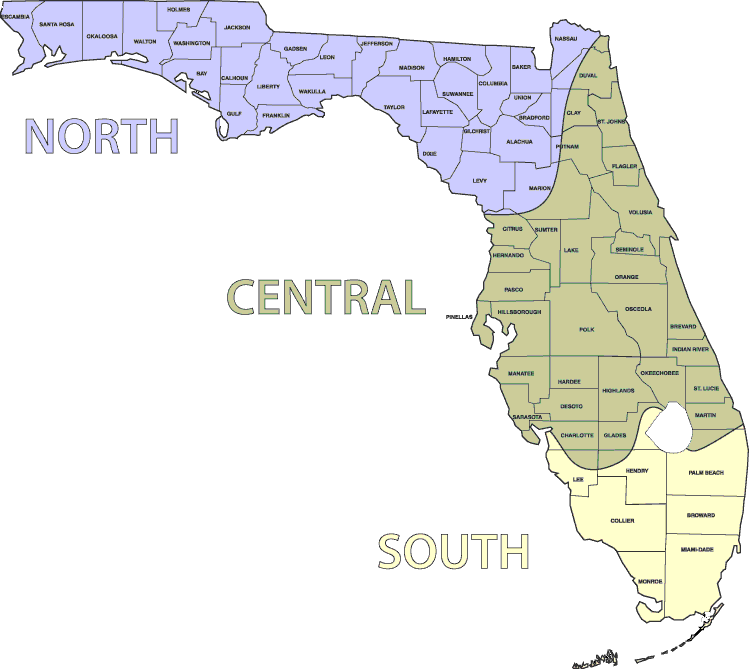Tomatillo Varieties for Florida
Tomatillos, with their papery husks and tangy green fruits, bring a unique and flavorful touch to any garden. These plants are known for their distinctive, lantern-like husks that encase the small, round fruits. The bright green or purple fruits, depending on the variety, are a staple in many Mexican dishes, adding a zesty flavor to salsas, sauces, and more.
In Florida planting zone 9, tomatillos thrive during the warm months, producing an abundant harvest. The plants grow vigorously, with a sprawling habit and numerous branches that produce clusters of husk-covered fruits. Watching these unusual fruits grow and ripen inside their husks is a rewarding experience, showcasing the success of your gardening efforts.
For those new to gardening, tomatillos are a fun and rewarding choice. They are relatively easy to grow and provide a plentiful harvest of unique and flavorful fruits. Whether you enjoy them in fresh salsas, roasted, or cooked into sauces, tomatillos bring a distinctive and tangy addition to your meals, making your gardening endeavors both enjoyable and fruitful.
I would give tomatillos a 4 out of 5 on how easy they are to grow. They are relatively straightforward to cultivate and manage, making them suitable for both beginners and experienced gardeners.
Tomatillo Varieties:
Toma Verde
Heirloom

Description: Toma Verde is a popular and reliable tomatillo variety known for its medium-sized, bright green fruits. The fruits have a tangy flavor and are commonly used in salsas and sauces.
Growing Season: Spring, Summer, and Fall
USDA Planting Zone: 4-10
Special Notes: Early maturing and highly productive. Great for fresh eating and cooking. Matures in about 75 days.
Purple
Heirloom

Description: Purple tomatillos produce small to medium-sized fruits with a striking purple color. They have a sweet-tart flavor and are excellent for both fresh use and cooking.
Growing Season: Spring, Summer, and Fall
USDA Planting Zone: 4-10
Special Notes: Adds color to dishes and salsas. Matures in about 80 days. The fruits become sweeter when allowed to ripen fully on the plant.
Pineapple
Heirloom

Description: Pineapple tomatillos are small, yellow fruits with a unique, sweet, and slightly tropical flavor. They are excellent for fresh eating, jams, and desserts.
Growing Season: Spring, Summer, and Fall
USDA Planting Zone: 4-10
Special Notes: Distinctive flavor profile and very productive. Matures in about 70-75 days.
Rio Grande Verde
Heirloom

Description: Rio Grande Verde tomatillos produce large, green fruits that are perfect for making salsa verde. They have a robust, tart flavor and are highly productive.
Growing Season: Spring, Summer, and Fall
USDA Planting Zone: 4-10
Special Notes: Excellent for cooking and canning. Matures in about 75-80 days.
Gigante
Heirloom

Description: Gigante tomatillos are known for their large, green fruits that can grow up to 3 inches in diameter. They have a mild, slightly sweet flavor.
Growing Season: Spring, Summer, and Fall
USDA Planting Zone: 4-10
Special Notes: Ideal for making sauces and salsas. Matures in about 85 days.
Florida Vegetable Planting Guide
This guide provides information on when to start seeds inside, direct seed, and transplant starter plants in the different regions of Florida.
North USDA Planting Zones: 8b-9a
Central USDA Planting Zones: 9b & some of 10a
South USDA Planting Zones: 10a-11b
Visit the U.S. National Arboretum for an Exact USDA Planting Zone Map.

| Tomatillo | North Florida | Central Florida | South Florida |
|---|---|---|---|
| Start Seeds Inside | Jan-Feb/Aug-Sep | Jan-Feb/Aug-Sep | Jan-Feb/Aug-Sep |
| Direct Seed | Not recommended | Not recommended | Not recommended |
| Transplant Starter Plants | Mar-Jun/Aug-Sep | Mar-Jun/Aug-Sep | Mar-Jun/Aug-Sep |
Explanation:
Start Seeds Inside: Starting tomatillo seeds indoors allows for controlled conditions, ensuring strong seedlings ready for transplanting outdoors.
Direct Seed: Direct seeding tomatillos is not recommended because they require a long growing season and benefit from indoor germination and growth.
Transplant Starter Plants: Transplanting tomatillo starter plants during the warmer months helps them establish quickly in the garden, leading to a productive harvest.
________________________________________________________________________________________________________________________
Soil: Tomatillos prefer well-drained, fertile soil with a pH between 6.0 and 7.0. Amend the soil with compost or well-rotted manure to improve fertility and structure.
Sun: Full sun is essential for optimal growth and fruit production. Ensure tomatillos receive at least 6-8 hours of sunlight daily.
Watering: Keep the soil consistently moist but not waterlogged. Mulching helps retain soil moisture and regulate temperature.
Spacing: Plant tomatillo seedlings 18-24 inches apart in rows and space rows 2-3 feet apart. Proper spacing ensures adequate air circulation and room for growth.
Fertilization:
N-P-K Ratio: Tomatillos benefit from a balanced fertilizer with a slightly higher phosphorus content to support fruit development, such as 5-10-5 or 5-10-10.When to Add:
Before Planting: Apply the fertilizer to the soil before planting seeds or transplants to promote strong initial growth and root development.
Mid-Growing Season: Reapply the fertilizer when the plants start to flower and set fruit, and then every 4-6 weeks during the growing season to support continued growth and fruit production.
Application Tips:
Follow the directions on the fertilizer package to avoid over-fertilization.
Apply the fertilizer evenly around the base of the plants and water thoroughly to help the nutrients reach the roots.
Additional Tips:
Tomatillos grow best in well-drained soil rich in organic matter, so consider adding compost to improve soil fertility and structure.
Mulch around the plants to help retain moisture, suppress weeds, and regulate soil temperature.
Ensure that tomatillos receive consistent moisture, especially during flowering and fruiting, to prevent stress and promote even growth.
Blog post on Natural Fertilizers
Support: Tomatillos can become quite sprawling, so providing stakes or cages can help support the plants and keep the fruits off the ground.
Pollination: Plant at least two tomatillo plants to ensure proper pollination, as they are not self-pollinating.
Harvest: Harvest tomatillos when the husk turns brown and splits open, and the fruit fills the husk. The fruits should be firm, fully colored, and slightly sticky, typically 75-100 days after planting.
Storage: Store harvested tomatillos in their husks in a cool, dry place. They can last several weeks when stored properly.
By selecting the right tomatillo varieties and following these growing tips, you can achieve a successful and bountiful tomatillo harvest in your Florida garden. Tomatillos are versatile and add a unique flavor to many dishes, making them a great addition to your garden.
Pests and Diseases that affect the Tomatillo in Florida:
Aphids: Small insects that suck sap from the leaves and stems, causing curling and yellowing.
Tomato Hornworms: Large caterpillars that feed on the leaves, stems, and fruit.
Whiteflies: Tiny white insects that feed on the undersides of leaves, causing yellowing and wilting.
Spider Mites: Tiny mites that cause stippling and yellowing of the leaves.
Natural Pest Control
Powdery Mildew: A fungal disease that causes a white, powdery coating on the leaves.
Bacterial Wilt: A bacterial disease that causes sudden wilting and death of the plant.
Companion Plants:
Basil
Description: Basil is a fragrant herb with bright green leaves and a sweet, slightly peppery flavor.
Growing Season: Spring through summer
USDA Planting Zone: 4-10
Special Notes: Prefers full sun and regular watering.
How it Helps: Basil helps repel aphids, whiteflies, and tomato hornworms with its strong aroma. It also attracts pollinators, which can help improve fruit set for tomatillos.
Marigold
Description: Marigolds are bright, sunny flowers that come in a variety of colors including yellow, orange, and red.
Growing Season: Spring through fall
USDA Planting Zone: 2-11
Special Notes: Marigolds release chemicals in the soil that deter nematodes and other soil-borne pests.
How it Helps: Marigolds help repel nematodes, aphids, and whiteflies. Their roots release a substance that helps prevent nematodes, protecting tomatillo roots.
Garlic
Description: Garlic is a bulbous plant that grows underground, with long green shoots above ground.
Growing Season: Fall to early summer
USDA Planting Zone: 3-8
Special Notes: Known for its strong scent and taste, garlic also has natural pest-repelling properties.
How it Helps: Garlic helps to repel aphids, spider mites, and other pests due to its strong odor. It also has antifungal properties that can help reduce the incidence of powdery mildew and bacterial wilt.
Borage
Description: Borage is an herb with star-shaped blue flowers and hairy leaves.
Growing Season: Spring to early fall
USDA Planting Zone: 3-10
Special Notes: Borage is known for attracting beneficial insects and improving soil health.
How it Helps: Borage attracts pollinators and beneficial insects like predatory wasps and bees, which help control pests such as tomato hornworms and aphids on tomatillos. It also improves soil quality by adding trace minerals.
Chives
Description: Chives are perennial herbs with long, thin, green leaves and a mild onion flavor.
Growing Season: Spring to fall
USDA Planting Zone: 3-9
Special Notes: Chives prefer full sun to partial shade and well-drained soil.
How it Helps: Chives help repel aphids, whiteflies, and spider mites with their strong scent. They also attract beneficial insects that prey on these pests.
These companion plants help protect tomatillos from pests and diseases while also enhancing the overall health and productivity of the garden.
For tomatillos, here are the vegetable plants that should not be planted nearby:
Corn - Competes for nutrients and can attract pests that affect tomatillos.
Dill - Can inhibit the growth of tomatillos.
Eggplant - Competes for nutrients and can attract similar pests.
Potatoes - Can spread diseases and compete for nutrients with tomatillos.
